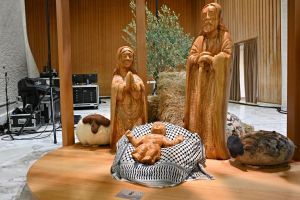Why Ebola is the next global health crisis

With the world's first Ebola vaccine just approved in Europe, the world's biggest global health crisis doesn't have to be. But it's important that Americans understand that Ebola is not just an African problem. The virus still has the potential to bring devastation on a massive scale, unless we work together with communities within Africa to ensure that people don't just have access to the vaccine, but are educated about how to contain the spread of the disease.
There were over 2,200 deaths since Ebola reemerged in the DRC last year. Rwanda closed its border with the DRC after cases of the virus were confirmed, but Ebola spreads quickly, and dangerously. By June, it had spread to Uganda.
Between 2014 and 2016, Ebola took 11,000 lives and infected 28,000 people in West Africa. The U.S. watched with bated breath as American doctor Kent Brantly, infected in Liberia in 2014, narrowly escaped death by being airlifted to a U.S. hospital.
Most aren’t so lucky. Ebola is a rare and highly infectious virus, with a variable death rate that averages around two-thirds but according to the WHO can be up to 90%. It leads to heavy internal bleeding and causes cells to explode throughout the body.
But Ebola is not just Africa’s problem. Although the virus has only emerged in Africa thus far, it is positioned to be the global health crisis of the next decade, and it has the potential to bring devastation on a massive scale.
As the most well-resourced country in the world, the United States has not only the ability but the imperative to extend aid to those suffering overseas. Compassion calls us to bring our expertise and resources to those exposed to Ebola in Africa, but it is also a matter of national and self-interest. This is not an “us vs. them” scenario. In today’s increasingly interconnected global society, the flow of people – and diseases – between countries is more commonplace than ever before.
The Ebola crisis is not dissimilar to the HIV/AIDs crisis in that education and safe health practices are key to stopping transmission of this deadly disease. Like HIV, Ebola is spread through direct contact with infected bodily fluids. Informing families with basic information of how the disease is spread can prevent the spread of the disease among those who are often protect and care for one another.
Stopping the spread of Ebola also means confronting potentially dangerous cultural practices. Funeral and burial practices in many parts of Africa that involve touching the bodies of loved ones are exceptionally high-risk. These practices can include bathing in the rinse water from the washing of corpses. Guinea’s Ministry of Health, for example, reported in 2015 that 60 percent of its Ebola cases at that time were linked to unsafe burial and funeral practices.
In the 1990s, large swaths of Africa were being decimated by AIDs. There was treatment available, but the majority of the population didn’t trust the government or the NGOs distributing the drugs. Many were overlooking a critical resource: the church, which has ability to mobilize extraordinary numbers of people.
As World Relief engaged in working in local communities to combat this disease, we worked with churches to encourage discussion of sexual practices, break the stigma of HIV and distribute treatment. As with HIV/AIDS, maximizing the role of the church is the most effective way to stop the transmission of the Ebola virus.
In Sub-Saharan Africa, an average of 77% of Christians attend religious services weekly or more. In one of my earliest trips to the continent, I walked hut to hut with a pastor searching out the people most stricken by AIDs. We discovered who needed childcare while they went to get treatment, and who wasn’t even aware that drugs were available.
Local pastors have the ability to locate the most vulnerable in their communities in ways that governments and foreign NGOs do not. We must rely on their relationships and cultural understanding in order to combat major health crises.
Information campaigns need to make the public aware of the early symptoms of Ebola. Unlike HIV, Ebola cannot be transmitted until a person develops symptoms – meaning awareness of the virus’s flu-like symptoms can be key to preventing its spread. One of the best ways to provide this lifesaving education is to use church networks.
Pastors and faith leaders are also essential to convincing loved ones to conduct modified burial practices. They can leverage their authority to stop the spread of false information about the infection, which can lead to attacks on health workers and Ebola treatment centers. Additionally, they can insist that the handling of bodies be done by teams who are trained in safe burials.
Faith leaders can also direct those potentially affected by the virus to avoid traditional healers, who could be in danger of contracting the virus themselves, and seek out safe and effective medical care – which requires the use of face masks, gloves, gowns and disposable needles. After the Ebola outbreaks began in 2014, for example, rumors spread that hospitals were places of contagion and death, causing many to avoid seeking early and potentially lifesaving medical care. Local churches can take the lead in stopping rumors like these.
Encouraging as the news of the vaccine approval is, Ebola remains a significant threat. When we use our resources to empower local churches – which are willing to serve anyone regardless of their beliefs – large foreign interventions aren’t required to break stigma and spread practical health messages to those in vulnerable populations.
If we want to head off the world’s next big health crisis, we can’t turn a blind eye to what’s happening in the DRC. And strategically activating local faith communities must be a critical component of our response.




























